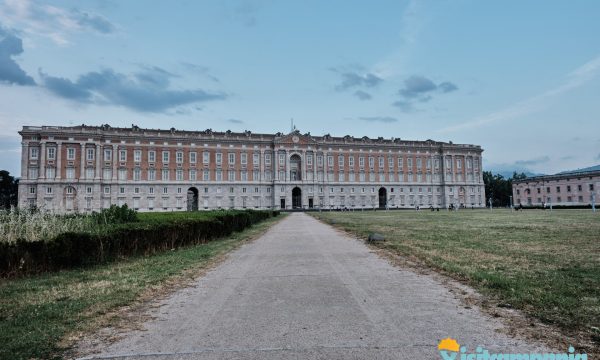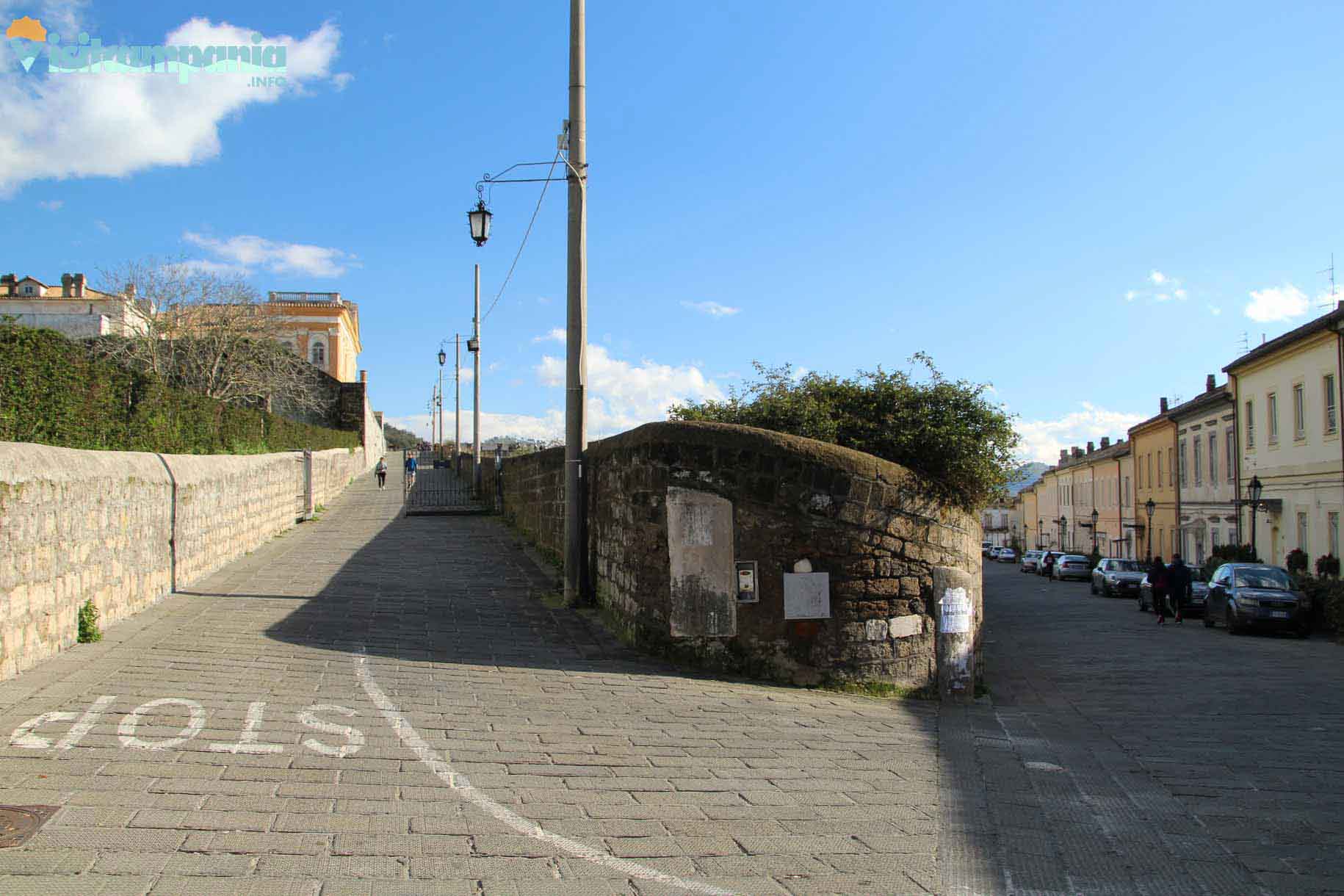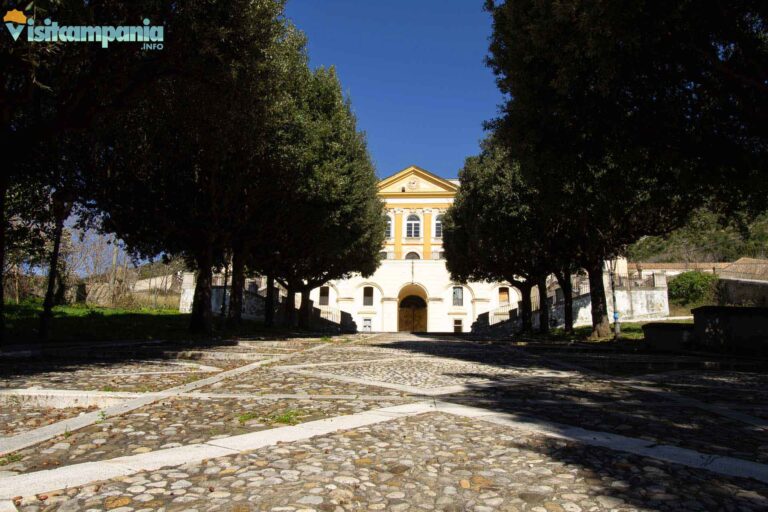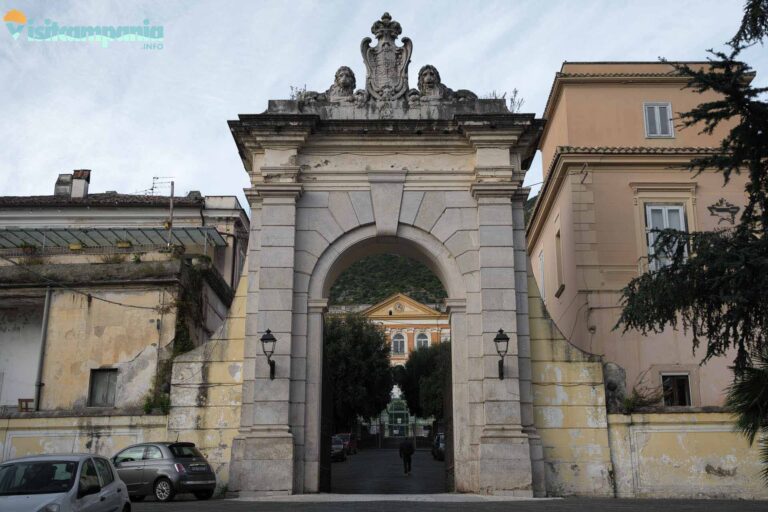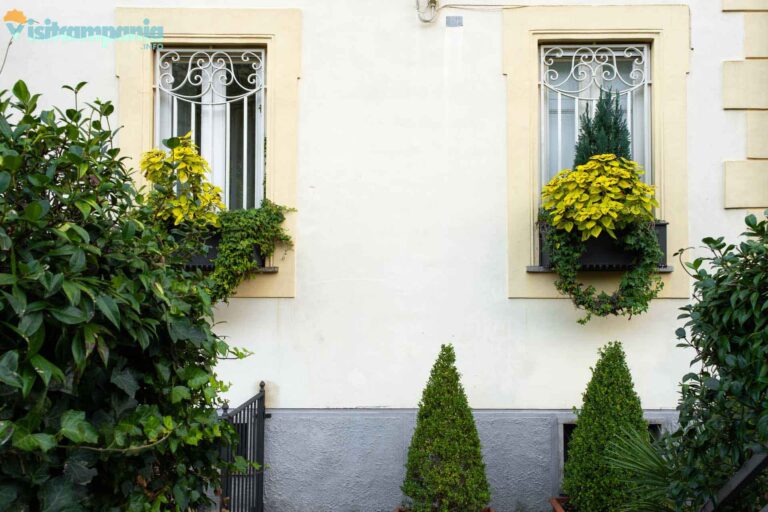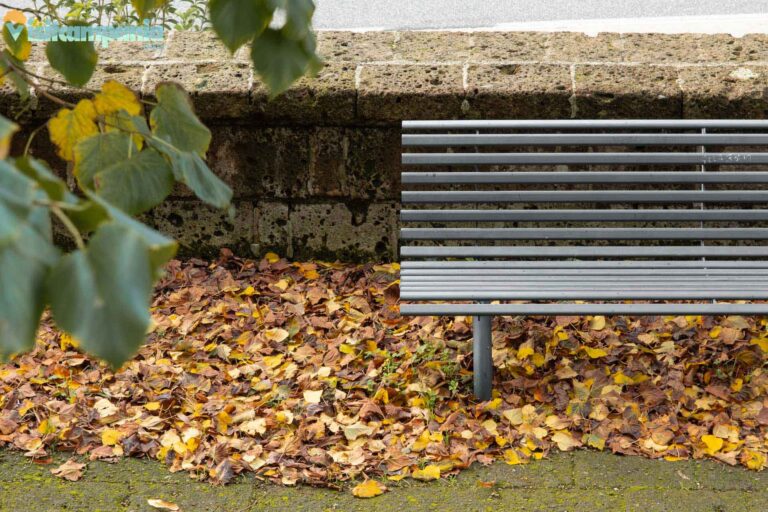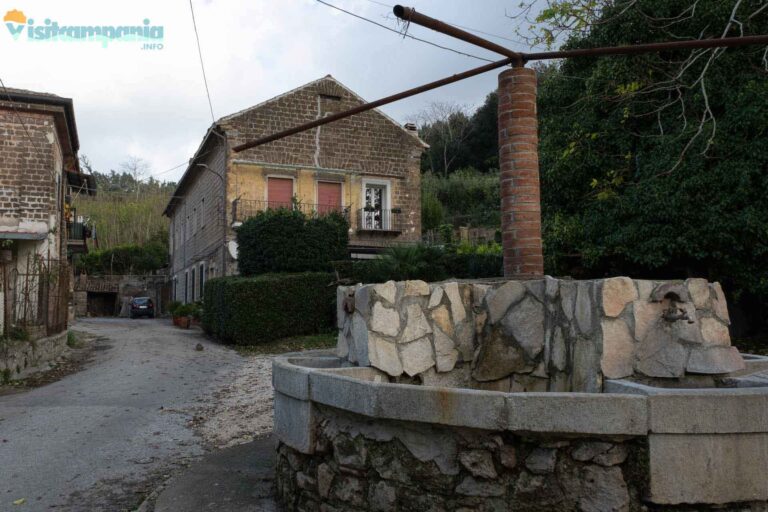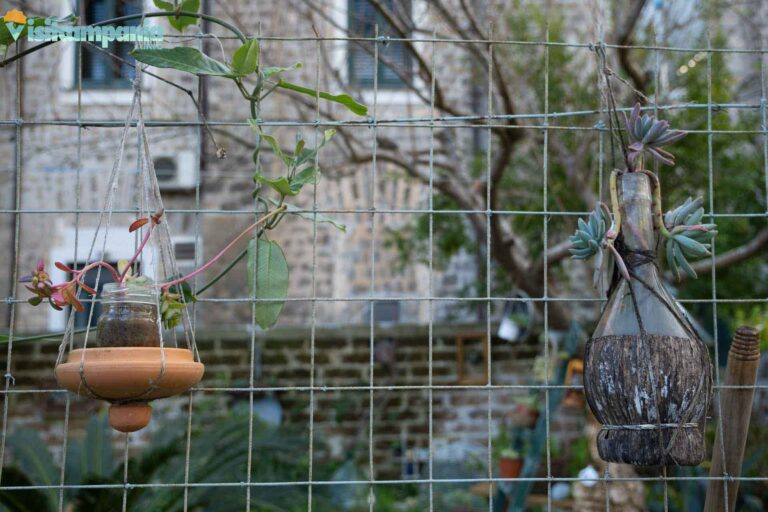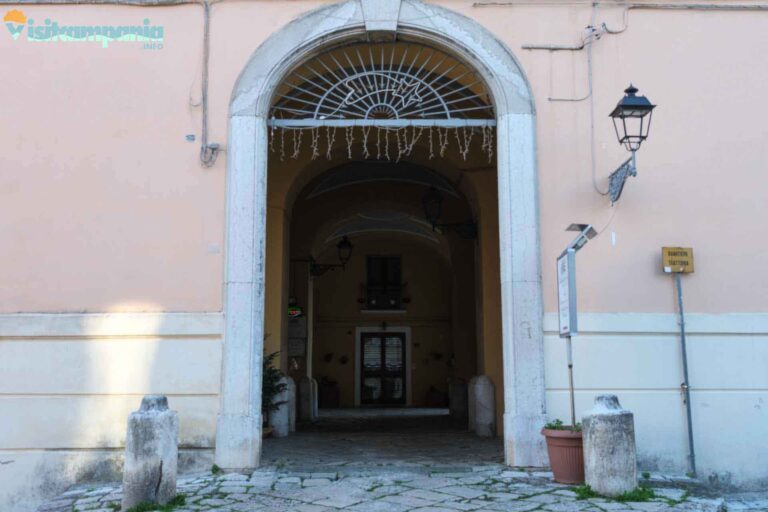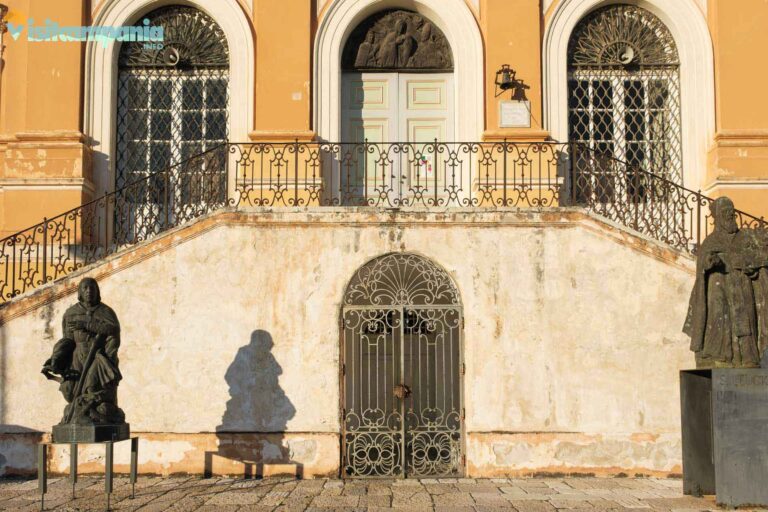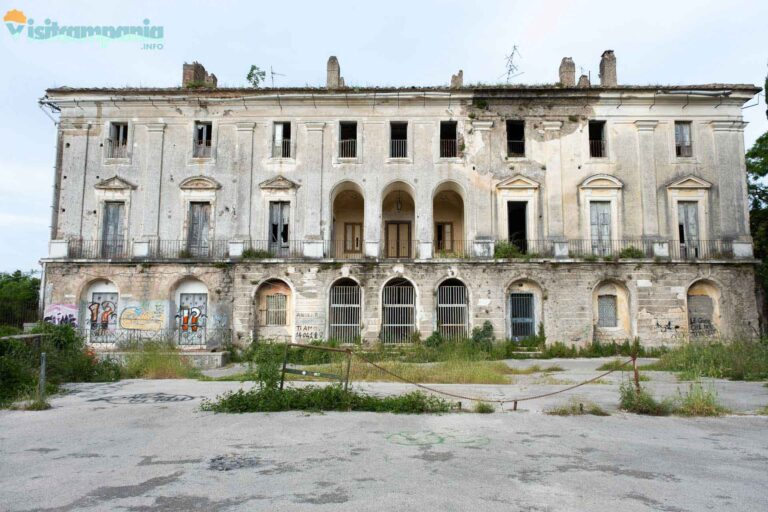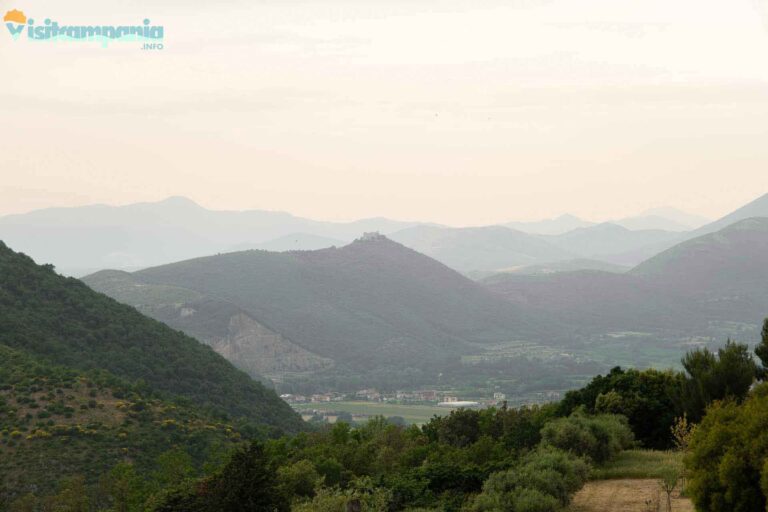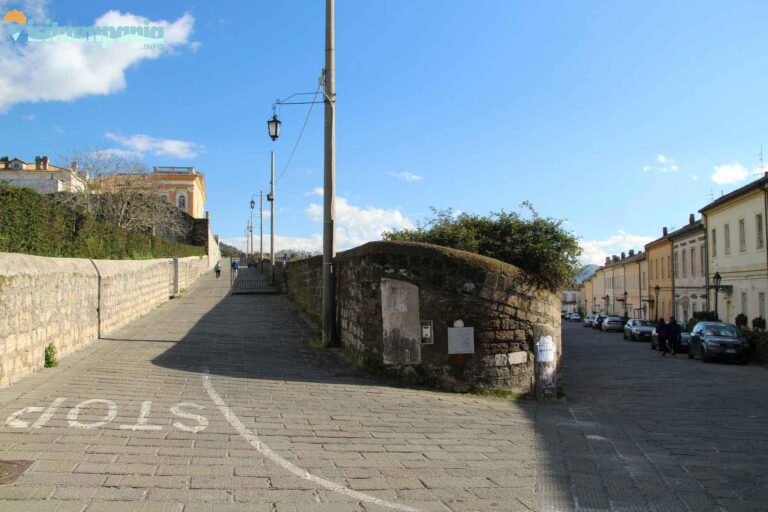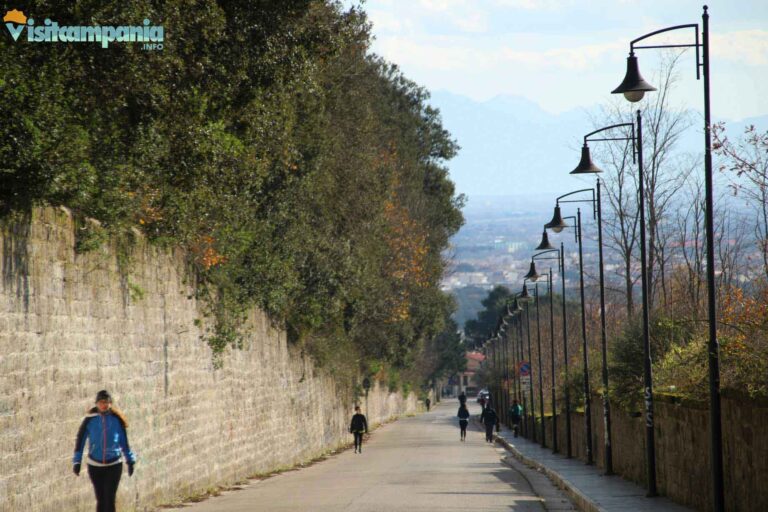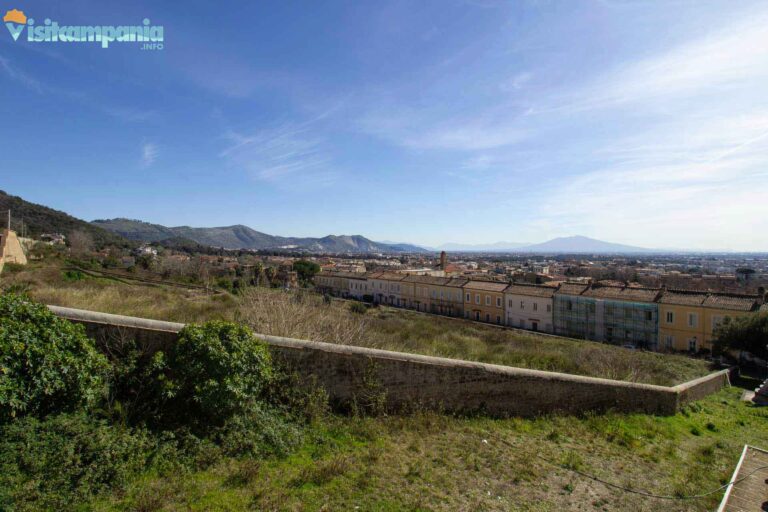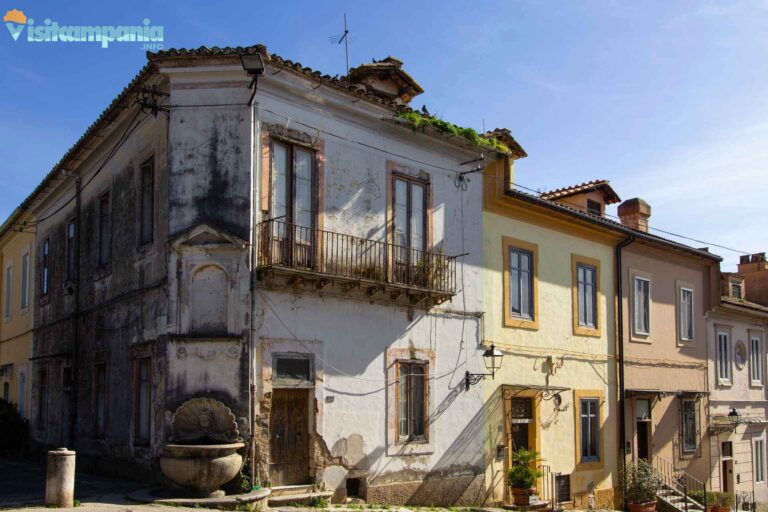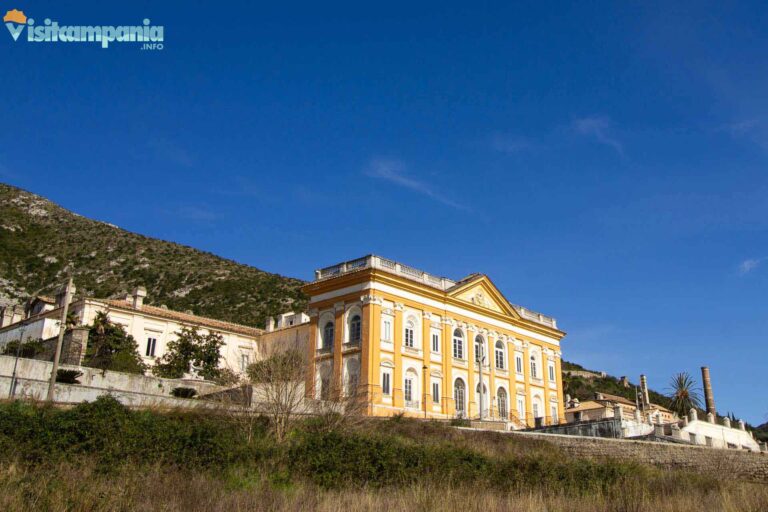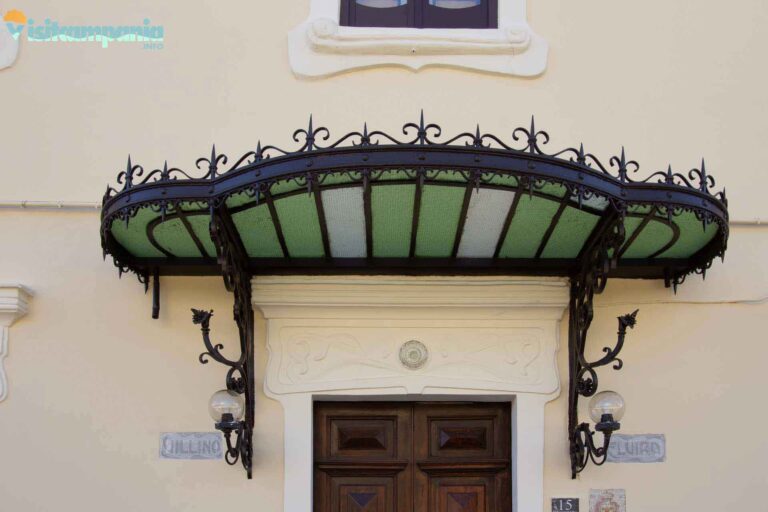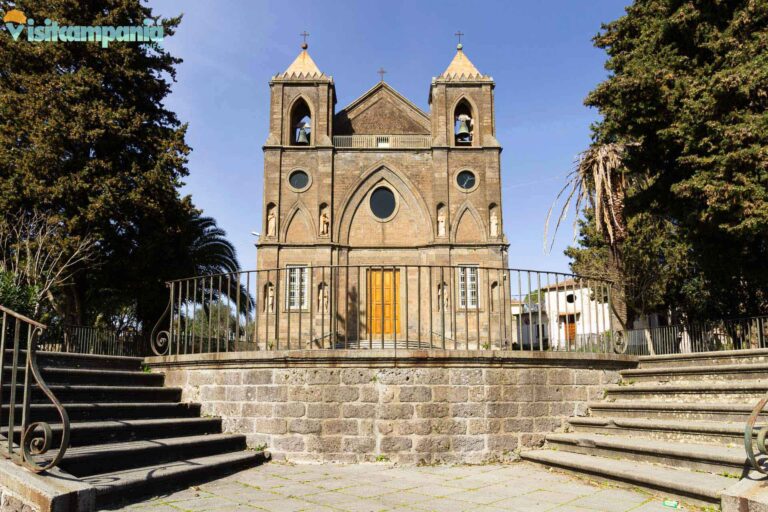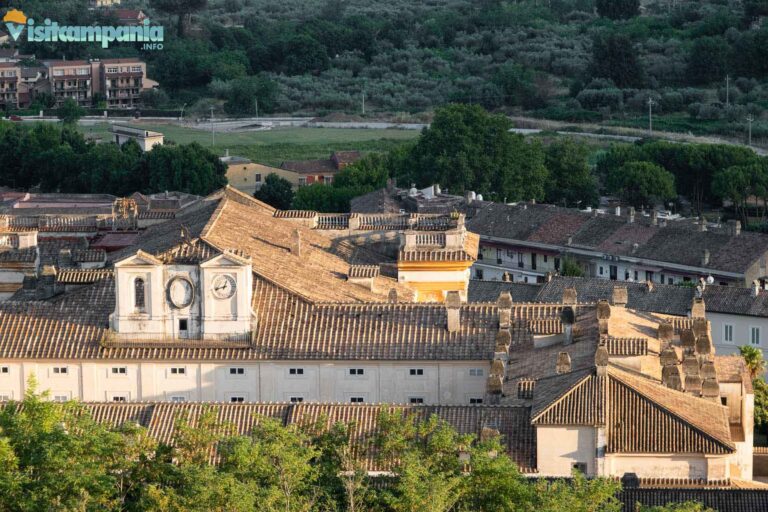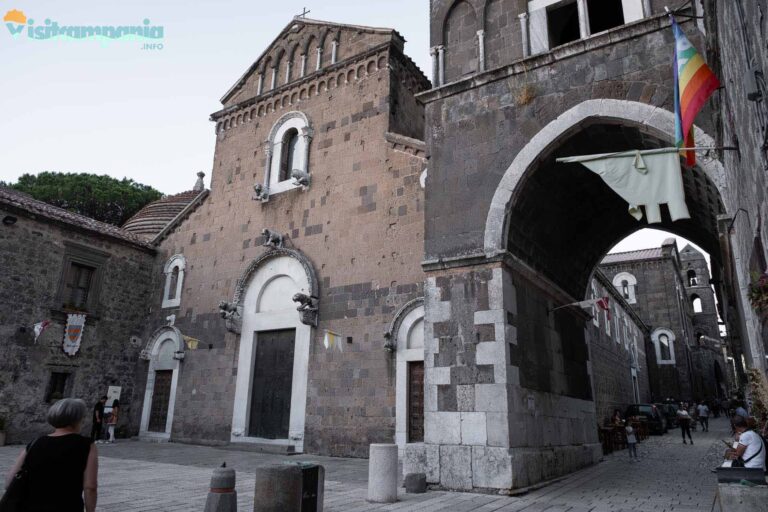What are Vaccheria and San Leucio?
The villages of San Leucio and Vaccheria are two of the 23 hamlets of the municipality of Caserta. They are located on the slopes of the Tifatini mountains, northwest of the capital. San Leucio is about 3.5 km from the centre of Caserta. In turn, Vaccheria is separated from San Leucio by about 1.5 km of gently sloping road.
They owe their current appearance, with clear eighteenth-century features, mainly to the work of the Bourbons and, in particular, of Ferdinand IV who promoted agricultural, cattle breeding and manufacturing activities.
Thus the village of Vaccheria developed from a Sardinian cow farm promoted by the King and San Leucio was the scene of an ambitious experiment of real socialism and enlightened despotism developed around the manufacture of silk.
Today the two villages are small towns surrounded by greenery overlooking the Gulf of Naples and Vesuvius and preserve tangible signs of the important Bourbon past. In particular , San Leucio is home to the Real Belvedere, which is part of the UNESCO World Heritage Site.
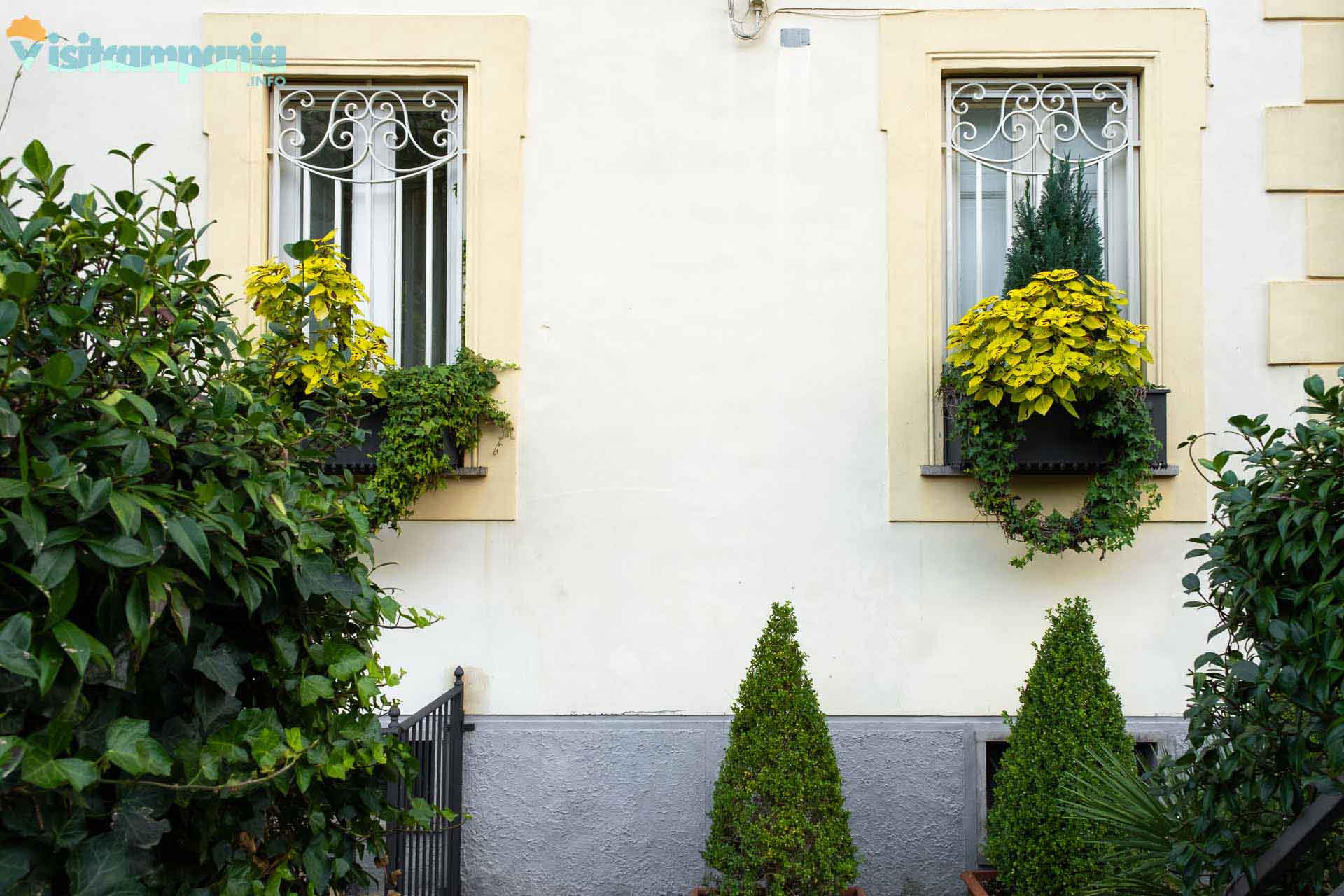
Things to see in Vaccheria and San Leucio
What is interesting to see in the two villages are, first of all, the villages themselves.
In particular, San Leucio offers us:
- The Bourbon Arch
- The Trattoria District
- The Royal Belvedere with Silk Museum and Weaver’s House
- The working-class quarters and the weaver’s house
- The Church of San Ferdinando Re
In Vaccheria we find, on the other hand:
- The village
- The Church of Santa Maria delle Grazie
- The Casino Vecchio della Vaccheria with a panoramic view of the Caiazzo plain and the Volturno river
- The path on the slopes of Mount San Leucio
San Leucio
The hamlet of San Leucio looks like a quiet village lying on the slopes of the mountain of the same name and at the foot of the monumental complex of the Real Belvedere. For a short time, from 1866 to 1928, it was also an autonomous municipality.
We begin our brief exploration of the village from Piazza della Seta, from which you can already see the Real Belvedere in perspective.
Trattoria District
After crossing the remains of a gate that opens onto Via Antonio Planelli , you will find, on the left, the Trattoria district. It is accessed through a large portal with a vestibule and is , in reality, made up of a single house developed around a triangular courtyard.
The building, built between 1794 and 1798 and still inhabited, served as accommodation and refreshment for the king’s visitors. It is the work of the architect Francesco Collecini, former first intendant of Luigi Vanvitelli and then private architect of King Ferdinand IV, who linked his name to the construction sites of the Royal Estate of Carditello, the Royal Palace of Caserta, the Carolino Aqueduct and, of course, the Royal Colony of San Leucio of which he was the main architect.
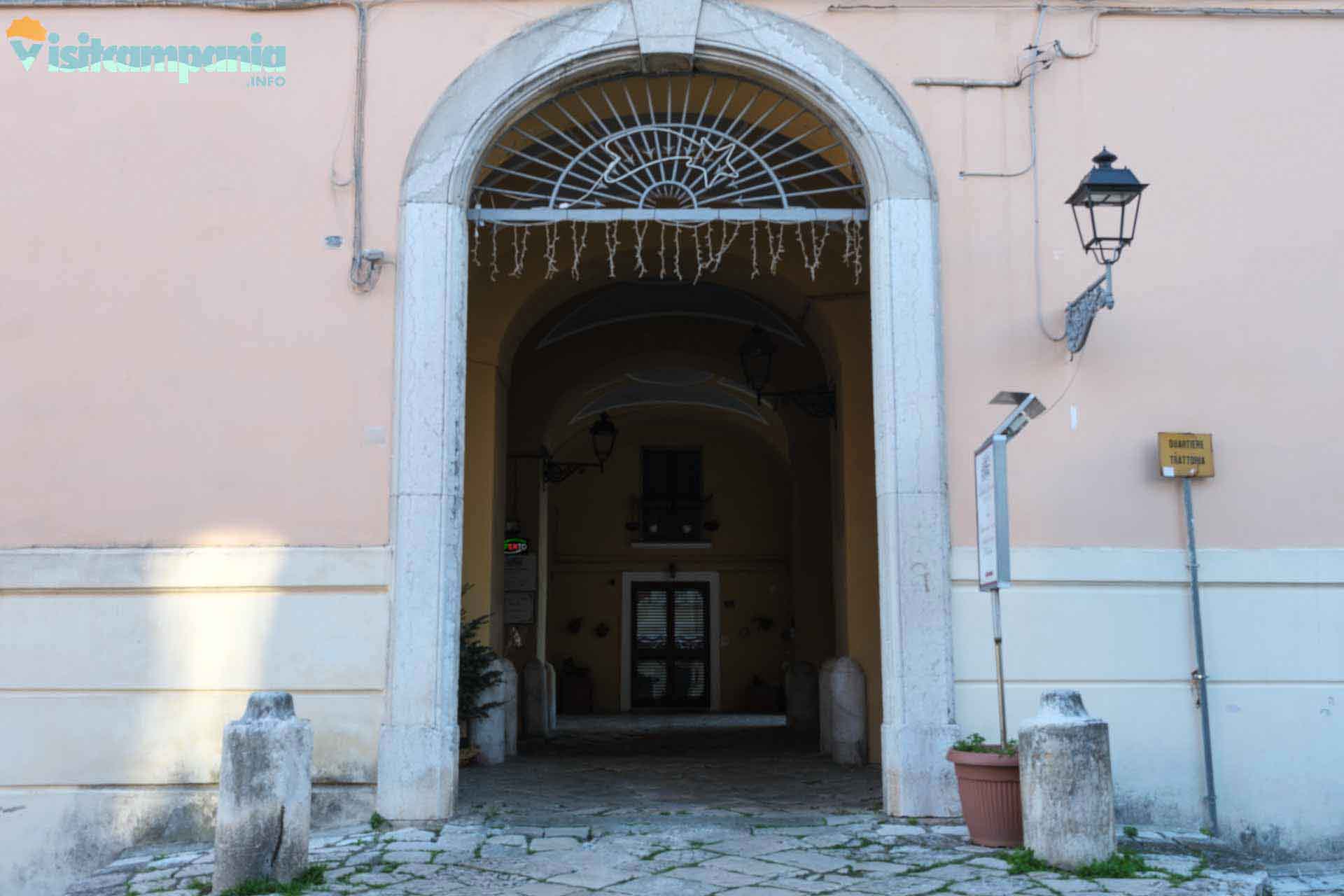
Bourbon Arch
Past the Trattoria district, you will come across the majestic Bourbon Arch, which is actually already clearly visible from Piazza della Seta. 13 meters high and 9 meters wide, it is surmounted by the Bourbon coat of arms placed between two lions. It is the main gateway to the royal colony but its origin is pre-Bourbon. In fact, it has seventeenth-century origins when it was the access gate to the feudal property of the Acquaviva Princes, lords of Caserta.
Beyond the arch, a few meters separate us from the gate that closes the former Bourbon stables and the double flight of steps that leads to the Real Belvedere.
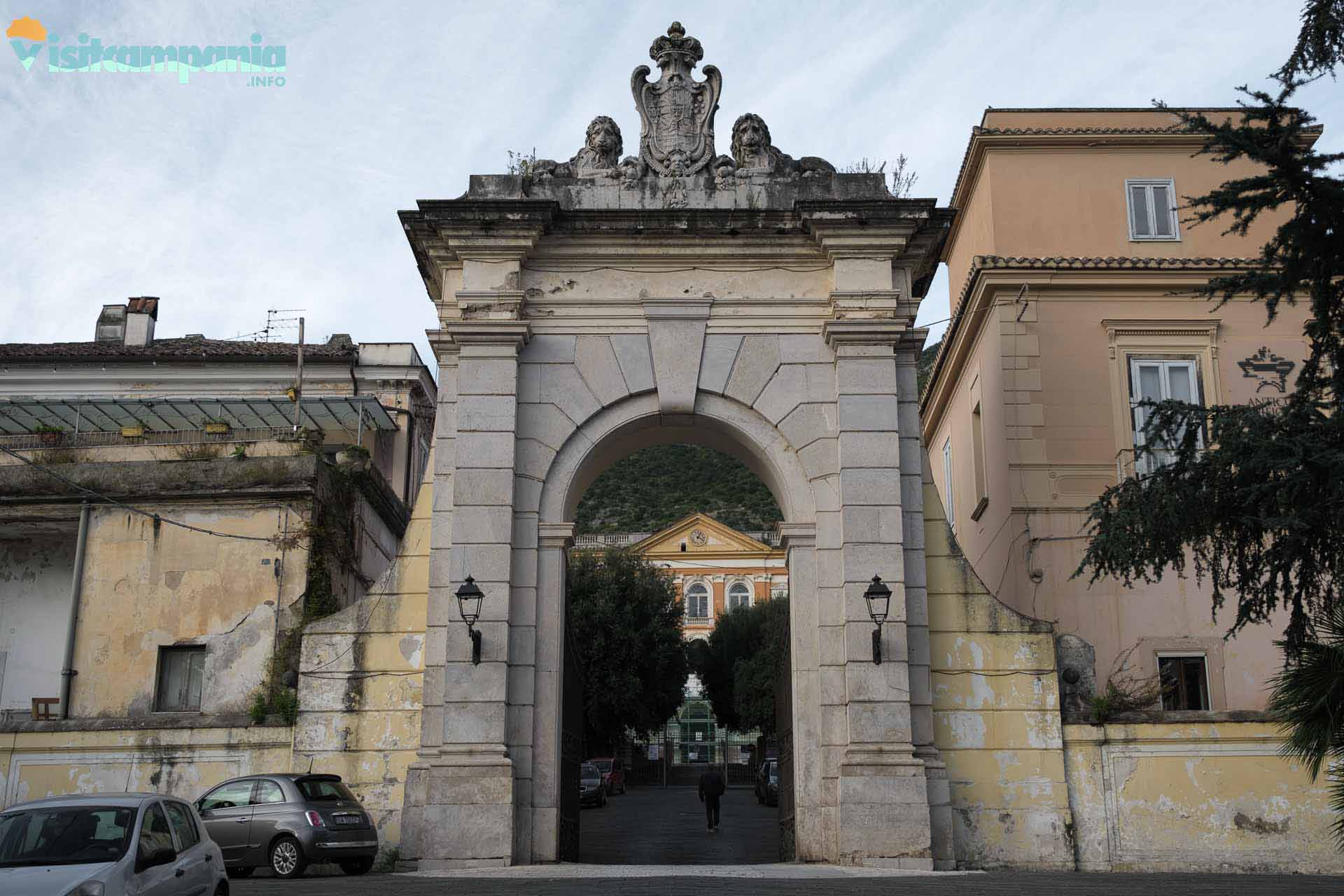
The working-class quarters and the weaver’s house
Before climbing the staircase, however, don’t miss a pleasant walk along Via Giardini Reali and Via Vaccheria along the two historic districts of San Carlo, on the left, and San Ferdinando on the right.
The two streets run at the foot of the Real Belvedere and are home to the two buildings divided into thirty-seven residential units for the silk workers of the Royal Colony of San Leucio.
The houses were built between 1786 and 1794 by Francesco Collecini , whom we have already met while talking about the Trattoria district. They were donated by the King to the inhabitants of the colony and are still inhabited today.
As we walk, we pay attention to the many interesting details that are scattered throughout the village. For example, the two splendid fountains that decorate the corners of the buildings at the end of the ascent of Via Planelli or the Art Nouveau canopies that stand out on the entrance doors of some houses.
Speaking of the workers’ homes, at number 8 of Via Giardini Reali there is the Casa del Tessitore, an example of a farmhouse that can be visited by purchasing a ticket at the ticket office of the Real Belvedere.
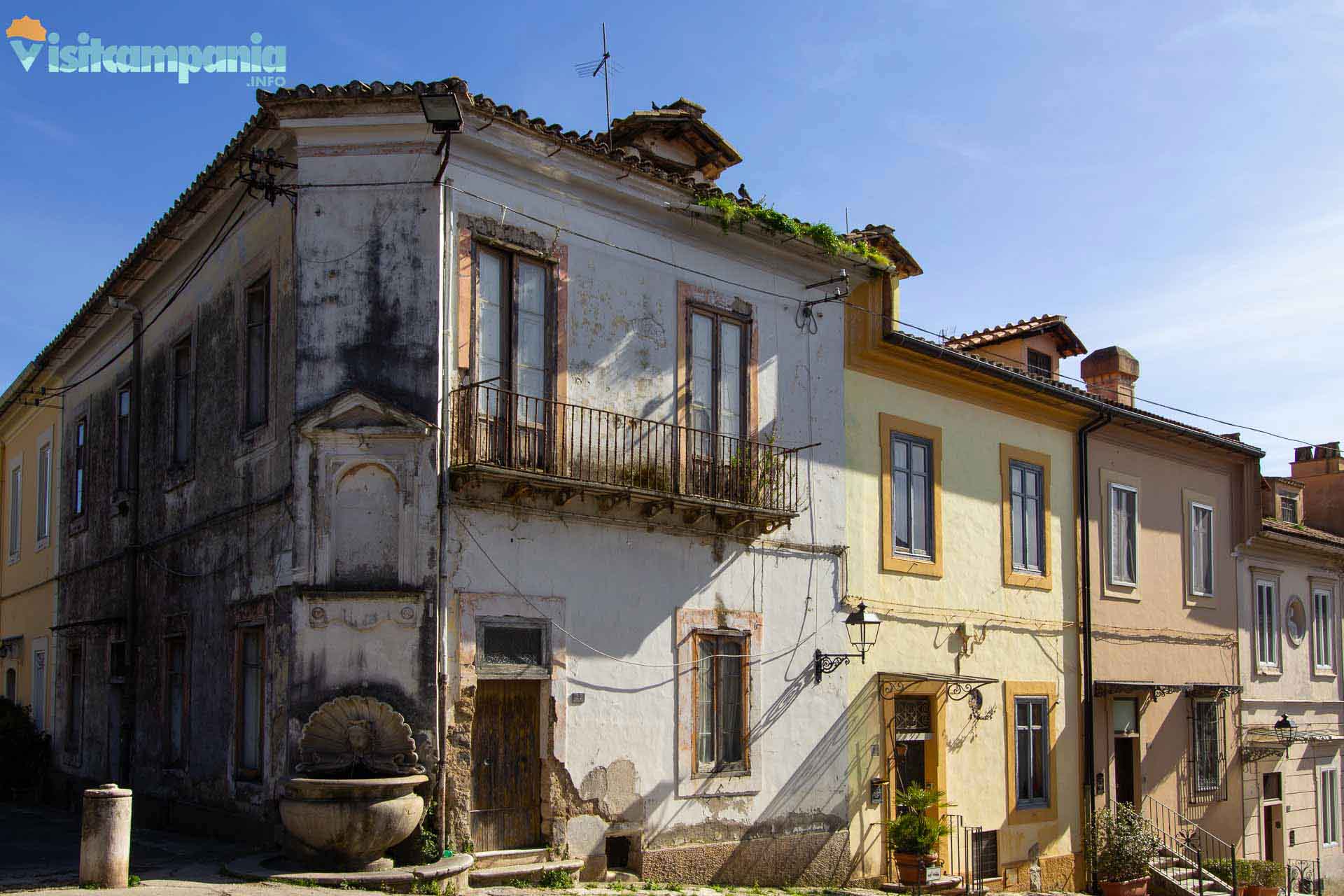
The vineyards of San Leucio
Looking up at the Real Belvedere, we can see the three souls that animated this place in the Bourbon era.
The stately soul and the industrial soul immediately jump out at the eye, well represented by the architectural complex of the Real Belvedere in which two very different and, apparently, irreconcilable souls masterfully coexist.
The other, the agricultural one, is unfortunately hidden today by neglect and eternal recovery work. It is, in fact, a pre-existence linked to the cultivation of the Acquaviva. On either side of the double flight of stairs that leads to the Belvedere, where today there are brushwood and little else, there were two vineyards, Torretta and Pomarello. And they weren’t the only ones. Further east, in the direction of the park of the Reggia, there was the vineyard called del Ventaglio characterized by a semicircular structure, divided into 10 rays, each containing vines of different species, indicated on travertine tombstones. And then olive groves and orchards to ensure the productivity and self-sufficiency of the Royal Colony following a model that we also find in the Royal Estate of Carditello, Capodimonte and even in the Royal Palace of Caserta. All these places were not only sumptuous royal residences but also real productive, industrial and/or agricultural sites.
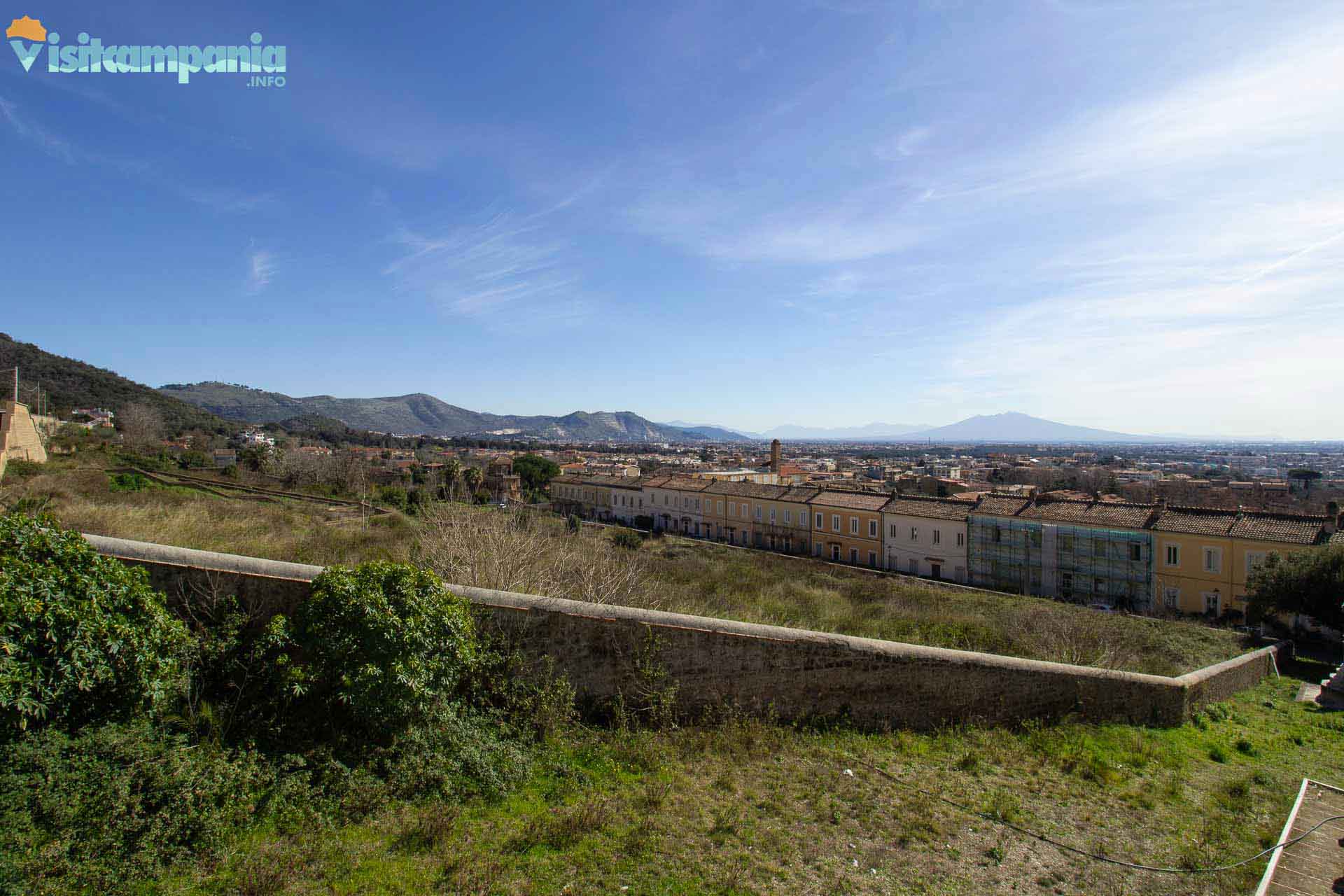
Real Belvedere and Silk Museum
At the end of the walk along the streets of the village, we can finally head towards the Real Belvedere, a very interesting example of industrial archaeology, which today houses the Silk Museum and is part of the UNESCO World Heritage Site.
The architectural complex, enlarged and modified by the Bourbons but dating back to the Acquaviva family, housed a silk factory and royal apartments. The most important thing, however, is that the entire complex had been conceived by King Ferdinand IV as the center of a new city, Ferdinandopoli, endowed with wide autonomy and a special statute inspired by the principles of enlightened despotism and real socialism. The uprisings following the French Revolution put an end to the ambitious project that did not regain momentum even after the Bourbon restoration of 1815 and was definitively scuttled by the Unification of Italy.
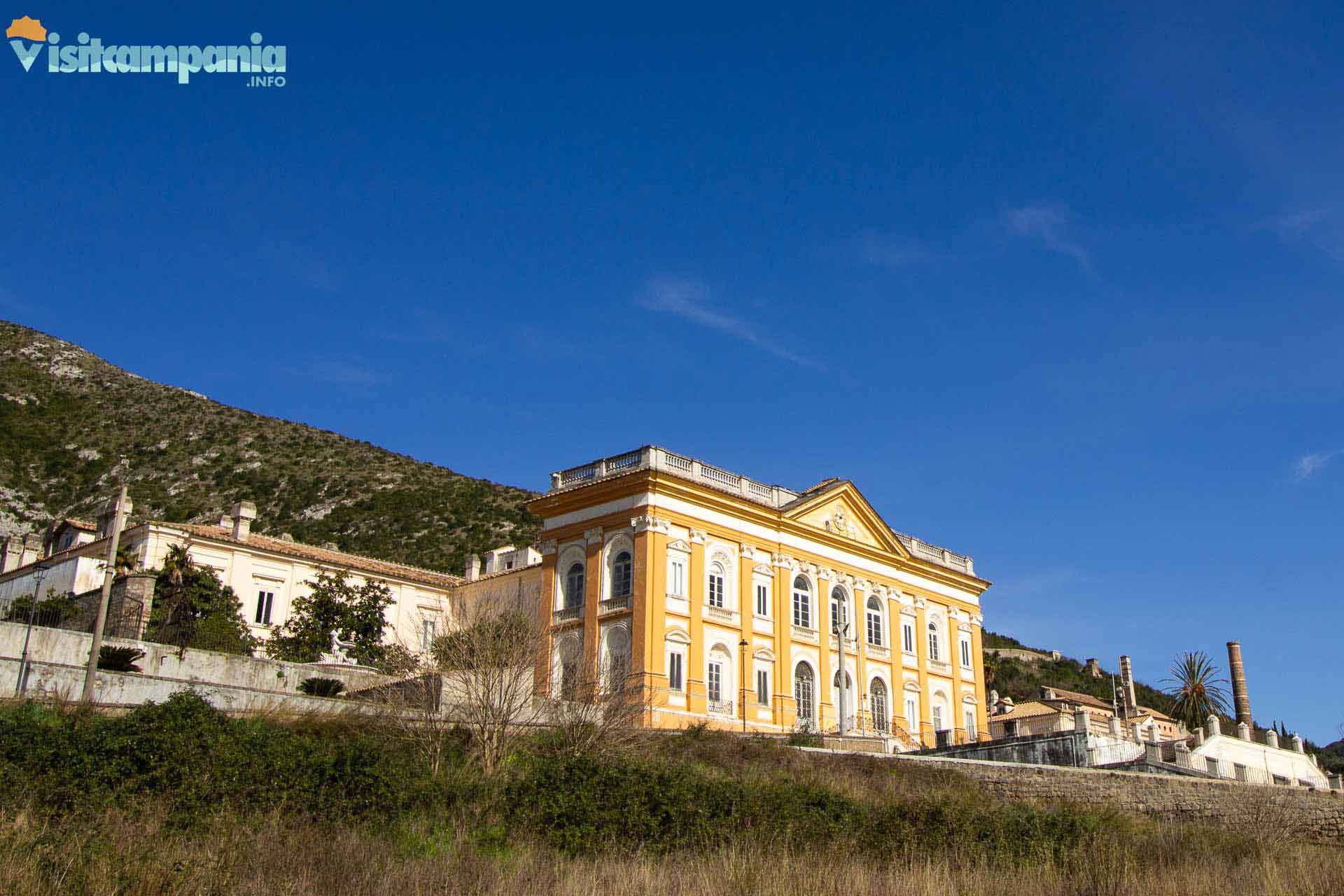
The Church of San Ferdinando Re
In addition to the museum, the complex also houses the church of San Ferdinando Re, still open for worship, which has served as a parish church for the community of San Leucio since 1778. It is accessed from the double flight staircase on the main façade right in front of the panoramic open space overlooking the village below and from which it is possible to see the Gulf of Naples with its islands and, on the left, Vesuvius.
After visiting the village of San Leucio we can head to the nearby village of Vaccheria.
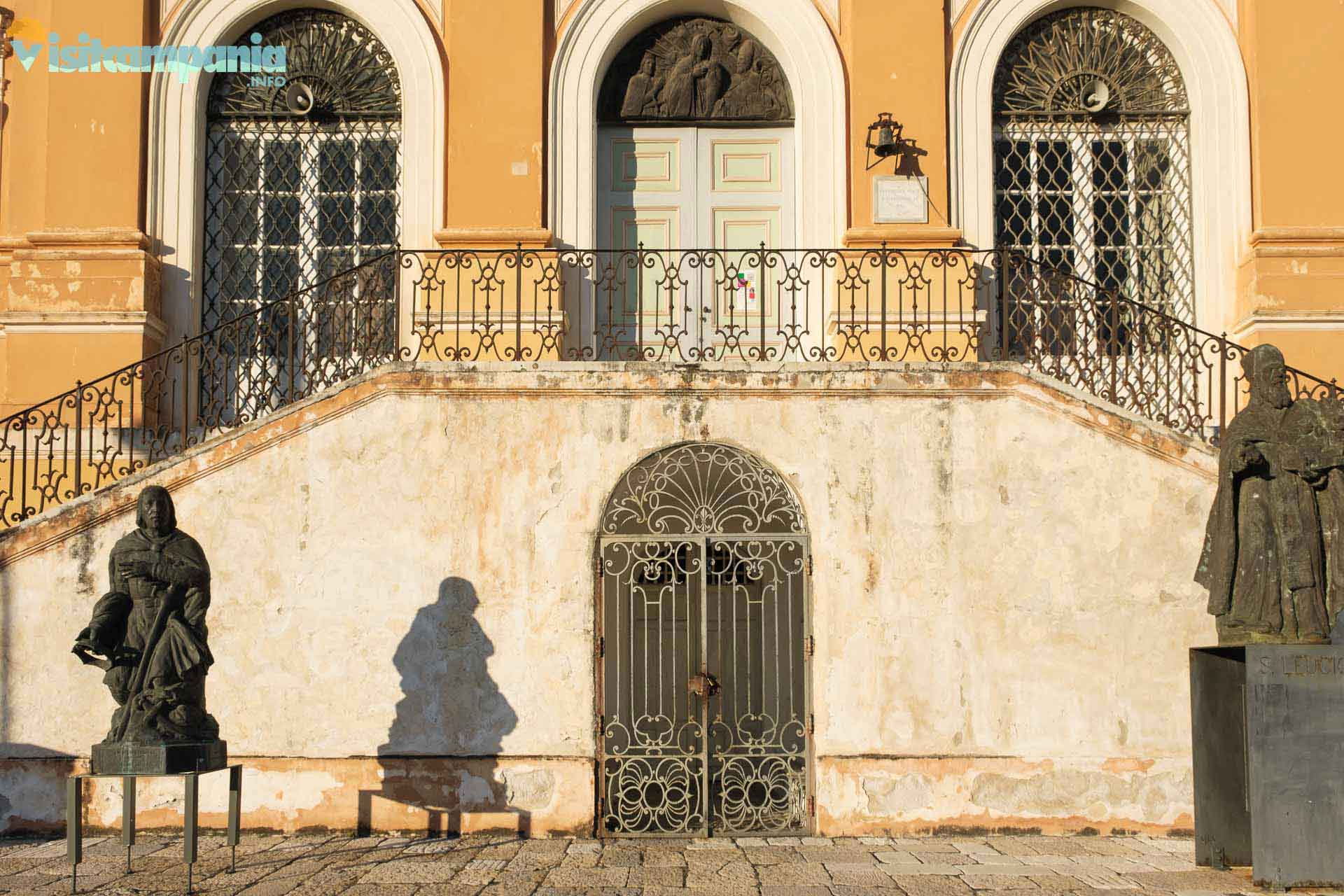
Vaccheria
The easiest and most pleasant way to reach Vaccheria from San Leucio is by continuing on Via Vaccheria, just over a kilometer and a half of gently sloping road that ends right in front of the main attraction of the village, the church of Santa Maria delle Grazie on the square of the same name.
The village
The village has very ancient origins as it was initially a small Roman settlement located near a temple dedicated to the goddess Diana Tifatina.
The current appearance, on the other hand, is largely due to Ferdinand IV who in 1773 built the first nucleus of the village, preparing rooms for the breeding of Sardinian cows, hence the name, and canetterie (shelters) for his hunting dogs. Subsequently, again at the instigation of Ferdinand IV, the village was enlarged to meet the industrial needs of nearby San Leucio and the village itself, where the breeding was combined with the processing of cotton and leather.
Traces of the past are scattered everywhere. Walking on the right side of the church, you will come across a washhouse , a drinking trough that bears witness to the village’s agricultural past, while the terraced houses on the left side of the church originally housed the King’s attendants such as dog groomers and gamekeepers. In Vaccheria, moreover, tombstones would be scattered in memory of the King’s beloved dogs affixed by the King himself.
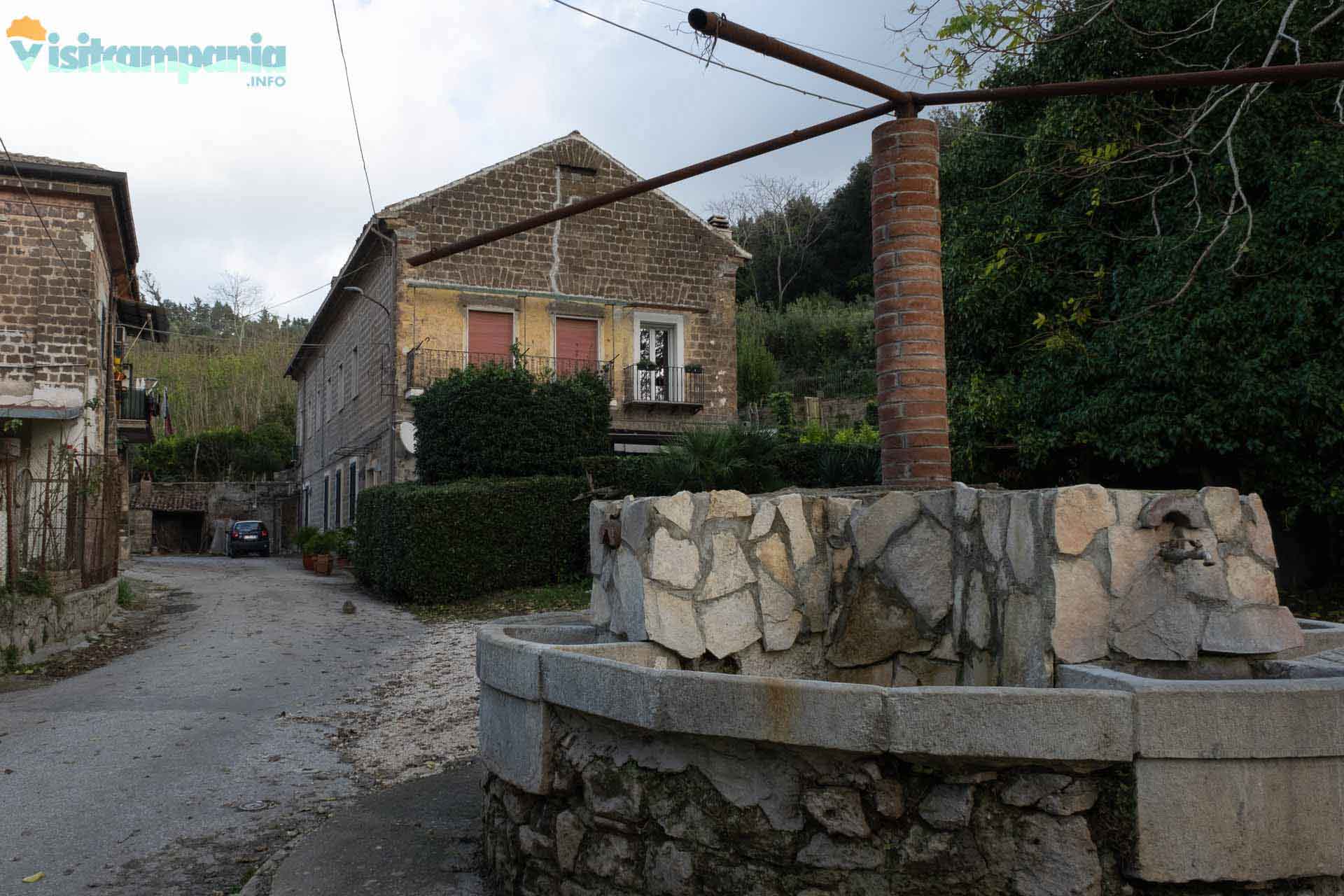
The church of Santa Maria delle Grazie
The centre of gravity of the small village of Vaccheria and the place of greatest interest is the church of Santa Maria delle Grazie.
The construction of the church began in 1803 and was completed in just 23 months. It was, in fact, inaugurated on July 2, 1805, the day dedicated to Our Lady of Graces who thus became the patron saint of Vaccheria. In addition, on the occasion of the inauguration, the Pope granted the King a special Jubilee of eight days to be celebrated in perpetuity on the feast of Our Lady of Grace.
But why so much solemnity for a church that is all in all small and secluded in the province? The origin is to be found in a vow of gratitude made by King Ferdinand IV himself. In fact, during the period of the Neapolitan Republic (1799) the court was forced to find shelter in Palermo. The King then made a vow: if he reconquered the Kingdom of Naples, he would build a church in homage to the Madonna delle Grazie in Vaccheria, a place he loved deeply. So, he returned to Naples in 1802 and followed through on his promise. He had the church built and offered the growing local community a new and larger meeting place, as the old meeting point at the chapel in the Old Casino could no longer accommodate everyone.
In charge of the work was the usual Collecini, a recurring name in Bourbon architecture and urban planning, who died before completing the work.
The entire structure with the churchyard is slightly raised above the level of the square in front of it and is accessed via two flights of symmetrical stairs. The façade of the church, in neo-Gothic style with neoclassical inserts, is made of tuff and is framed between two bell towers. The internal structure of the church, with a single nave, is decorated in Baroque style. Inside, the altarpiece on the high altar and other paintings from the nineteenth century stand out, as well as the polychrome Carrara marble floor.
Since 1953, the Church of Vaccheria has become a Marian Shrine.
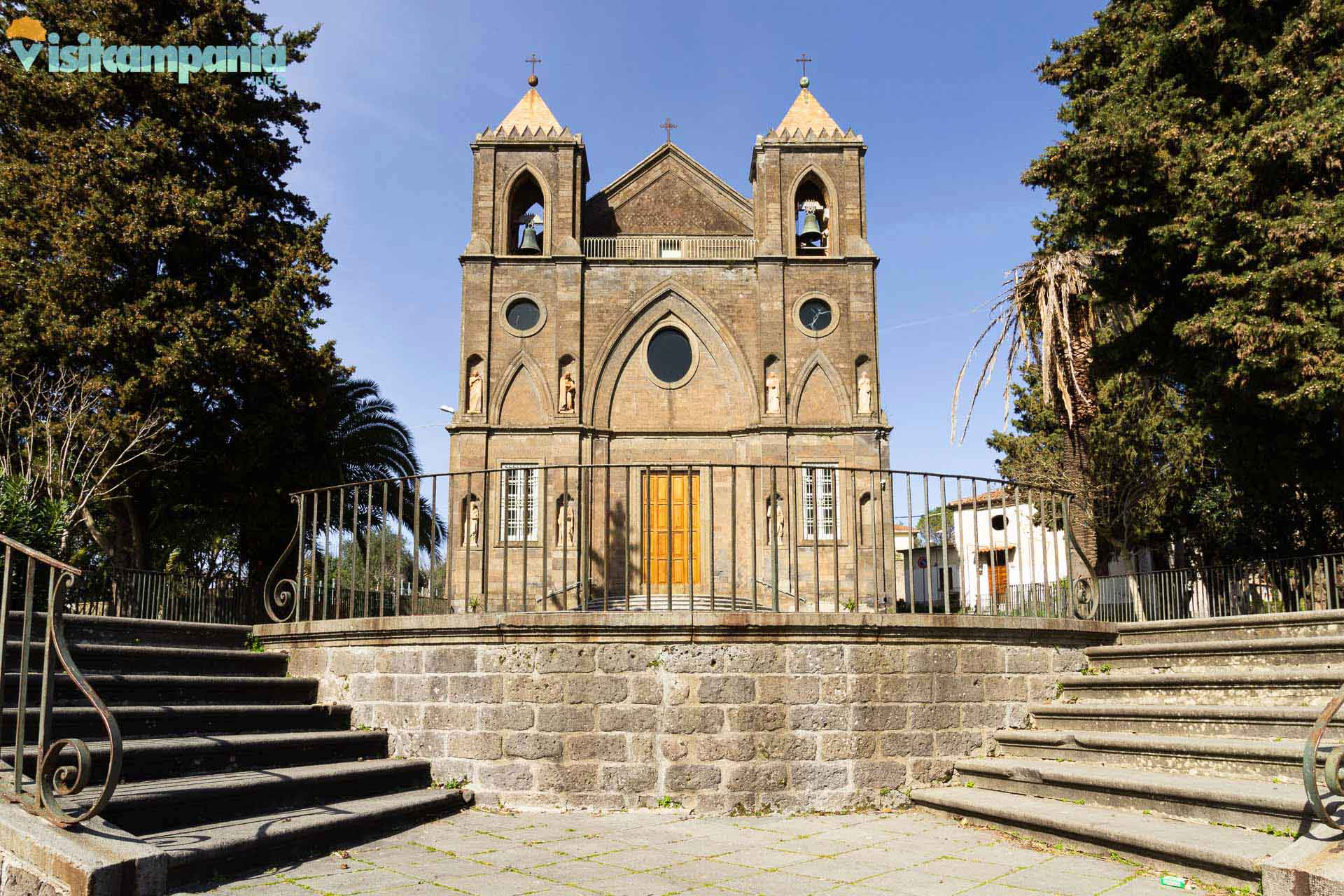
The path on the slopes of Mount San Leucio
Leaving the church and looking at the façade, we have two possibilities to visit. On the right, shortly after the drinking fountain, a short dirt path begins, which, skirting Mount San Leucio, takes us behind the Real Belvedere. The route is very scenic, almost completely flat and suitable for everyone. If you have some time and enjoy walking, you won’t be disappointed.
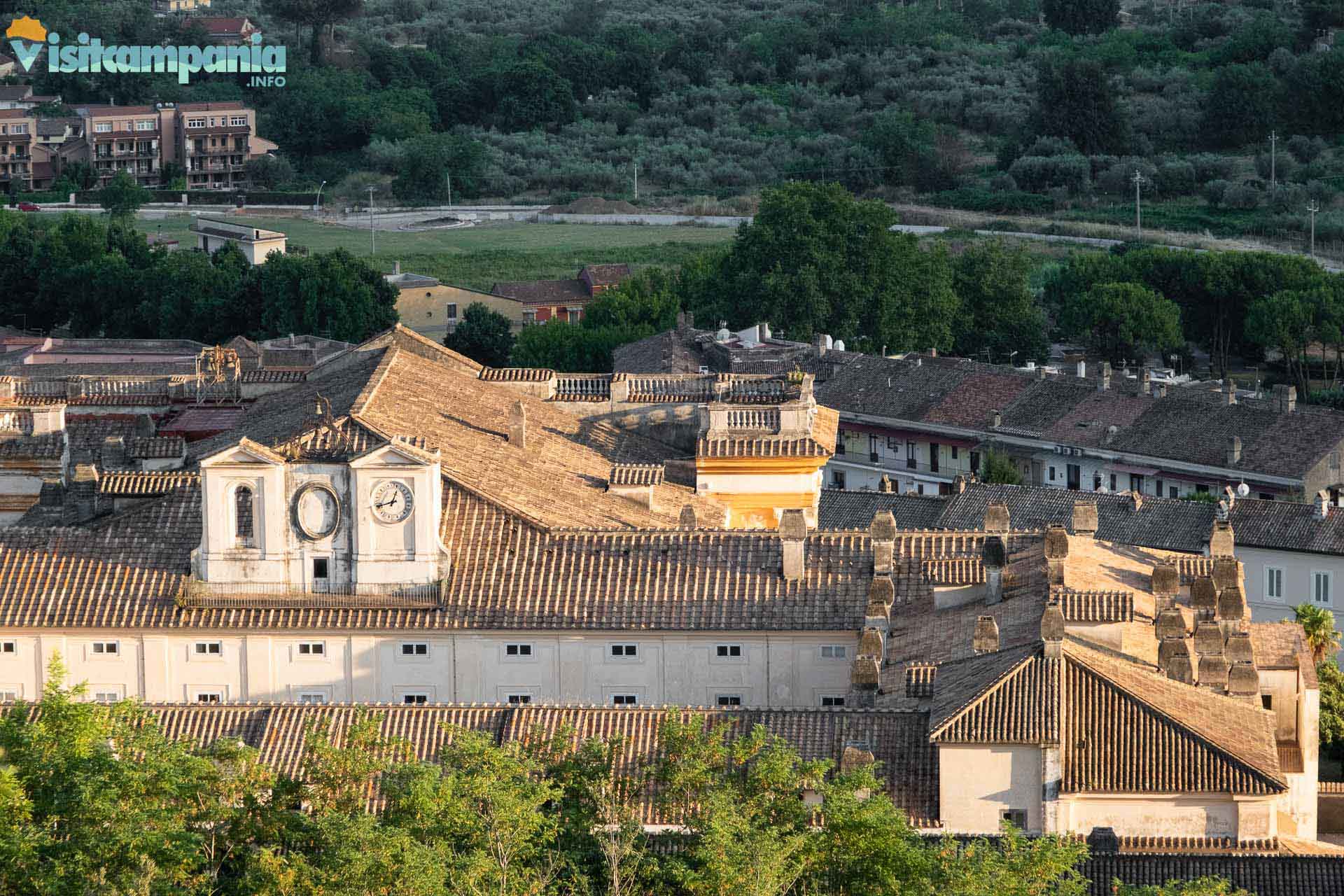
The Old Casino
On the left, on the other hand, a kilometer of asphalt road slightly uphill separates us from the highest and oldest point of the village: the Casino Vecchio.
The Antico Casino Reale was the place where Ferdinand IV rested after hunting wild boar in the Tifatini Mountains. It has the appearance of an elegant country villa with a rectangular plan and a façade overlooking a vast panoramic square. The façade is decorated with Doric pilasters and, on the main floor, has a panoramic balcony with a covered loggia with 3 arches. From here there is a suggestive view of the valleys below and the plain of the Volturno river. Inside, there is also a chapel dedicated to San Leucio, bishop of Brindisi, an important saint in pre-Bourbon Caserta.
On December 17, 1778, the heir to the throne, Charles Titus, died of smallpox at the age of 3. This tragic event prompted Ferdinand IV and Maria Carolina to abandon the palace, which from then on took the name of “Casino Vecchio” to distinguish it from the new Belvedere casino.
Today, the Casino Vecchio is in a state of deep degradation and abandonment due to the passage of time and the lack of restoration. It cannot be visited but at least you can enjoy a beautiful view.
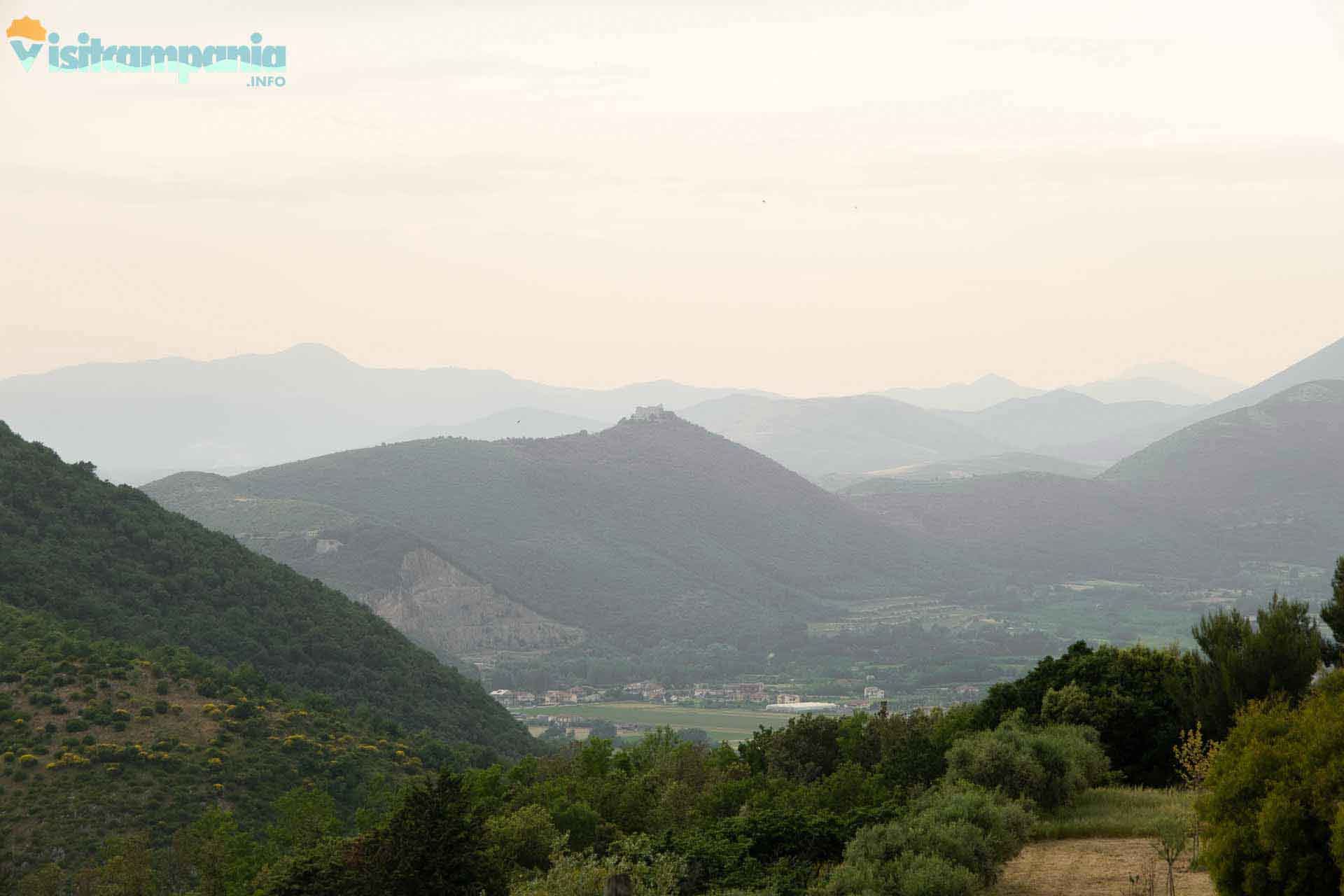
The Statute of the Royal Colony of San Leucio
The villages of Vaccheria and San Leucio are very interesting. They preserve vestiges of the important Bourbon past and offer places of great historical and artistic interest. One above all the Real Belvedere which, as mentioned, is a UNESCO World Heritage Site. However, what makes these places truly unique is the destiny that King Ferdinand IV had foreseen for them, a destiny formalized in the special statute that regulated their autonomy and life.
In fact, in 1789, the sovereign signed an exemplary work that contained the founding principles of the community of San Leucio, “Origin of the population of San Leucio and its progress up to the present day, with the laws corresponding to the good government of it by Ferdinand IV King of the Sicilies“, commonly known as the “Statutes of San Leucio“.
The Statutes of San Leucio, of which the author has remained unknown, were published in 150 copies by the Royal Printing House of the Kingdom of Naples.
The text was divided into five chapters and twenty-two paragraphs and reflected the aspirations of the enlightened despotism of the time to interpret the ideals of social and economic equality, paying particular attention to the role of women in the community.
The statute regulated life in the factory and the relations between the inhabitants and between them and the state. Revolutionary principles were introduced for the time that placed San Leucio at the forefront of the Age of Enlightenment.
There was no difference between the individuals, regardless of the work they did. Men and women enjoyed total equality in a system based solely on merit. Productivity was incentivized with a cash bonus based on the level of skill achieved by the workers. Working hours were 11 hours, while in the rest of Europe it was 14, and the minimum age for access to work was 15.
The first compulsory school for girls and boys in Italy was established.
To get married, men and women had to be at least 20 and 16 years old respectively and prove that they had obtained a “diploma of merit” granted by the Directors of Trades.
Weddings took place on the day of Pentecost with a special ceremony in which each couple received bouquets of roses, white for men and pink for women, exchanging them as a promise of marriage in front of the village elders.
Private property was protected, but dowries and wills were abolished. The assets of her deceased husband passed to the widow and then to the “Mount of Orphans“, a common fund for the less fortunate managed by a prelate. A common “charity” fund was also set up to which everyone contributed a portion of their earnings.
Personal matters were judged by the Assembly of Elders appointed by election, who also monitored the hygiene of the homes and could decide on disciplinary sanctions and expulsions from the colony.
Finally, the inhabitants were free to leave the colony whenever they wished, but attempts were made to discourage this possibility by prohibiting them from returning to the colony or reducing liquidations.
As already mentioned, the realization of this utopian project, which in addition to the statute provided for the construction of a new city, was never completed. Historical events such as the French Revolution and the unification of Italy prevented the project from consolidating. However, the industrial legacy of the Bourbons has come down to the present day and silks from San Leucio still embellish important residences such as the Quirinale, the White House and Buckingham Palace.
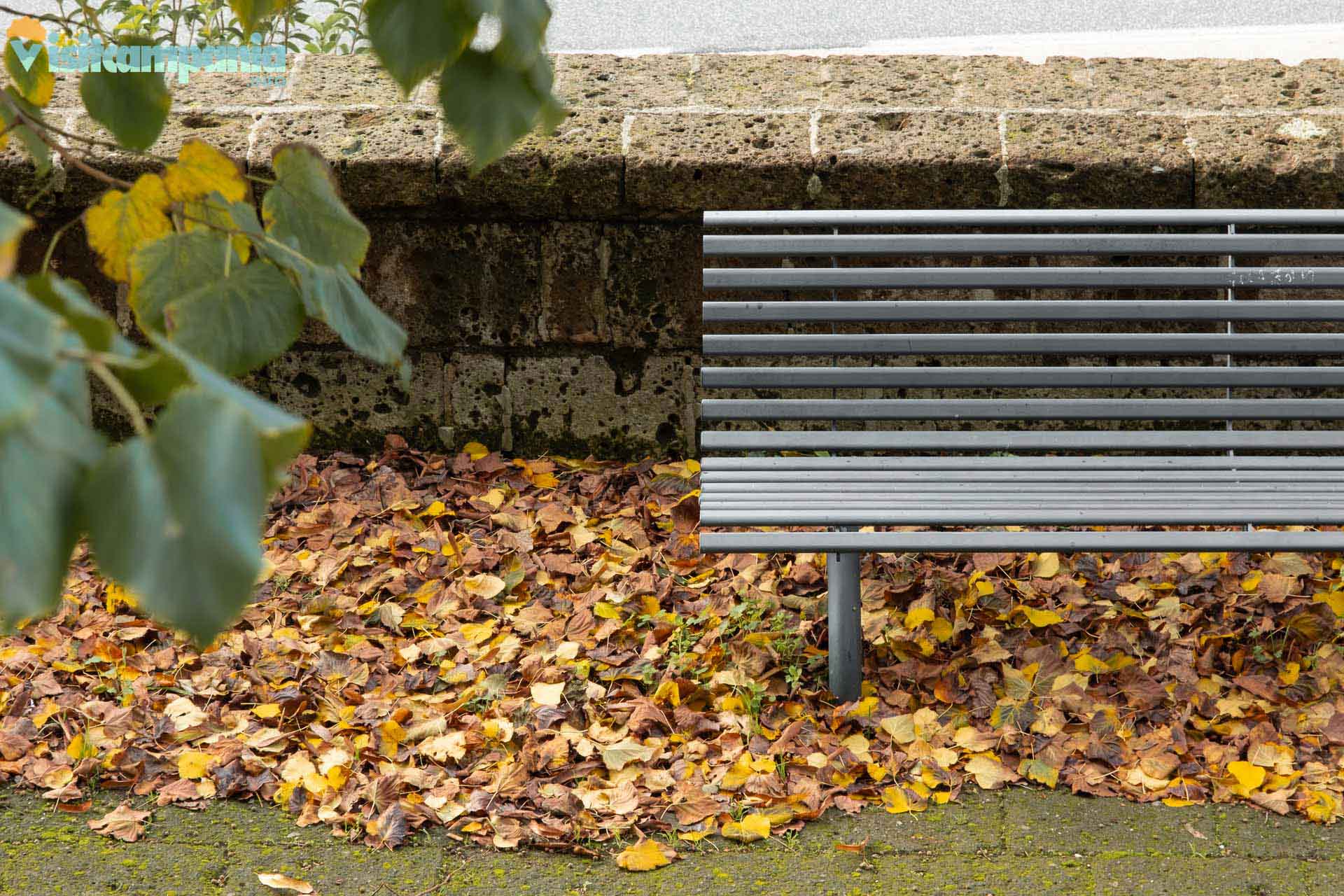
To learn more
- San Leucio, between history and memory (video);
- Real Borgo di San Leucio (website);
- Ferdinandopoli, the fragile utopia (website);
- sanleucionline (website);


